1900s
Making a dead dog bark
1909: Dr. Marage of the Paris Academy of Sciences removed the larynx from a dog and made it bark outside of its body. The larynx produced "barks and howls in every note of the canine register, from the deep baying of a mastiff to the shrill pipe of a terrier."I haven't been able to find out what Dr. Marage's first name was. All the sources I can find simply refer to him as 'Dr. Marage'.

The Sketch - Dec 15, 1909

Scientific American - Feb 5, 1910
Text from Scientific American (Feb 5, 1910):
When the larynx of a dog is removed during chloroform anesthesia, the laryngeal muscles retain their ability to contract for a short period, which varies from 3 to 10 minutes, but no contraction can be produced in the muscles of a dead larynx, even if it is removed immediately after the death of an animal, because the arterial blood has escapes.
In order to produce the vibrations, the current of air should be impelled by a pressure of from 6 to 8 inches of water, as it is in the normal production of the human voice. In these conditions the excised larynx of the dog barks and howls in every note of the canine register, from the deep baying of a mastiff to the shrill pipe of a terrier. These various notes are obtained at will by causing various muscles to contract.
Posted By: Alex - Thu Jun 20, 2024 -
Comments (0)
Category: Experiments, Dogs, 1900s
The Dancing Pig
Posted By: Paul - Sat May 25, 2024 -
Comments (0)
Category: Animals, Anthropomorphism, 1900s, Dance, Love & Romance
Trick Gun for Secret Society Initiations
Imagine the sheer delight of the person being initiated, when the realistic looking gun is pointed at them, a loud explosion occurs--but only water emerges! High-larious!Full patent here.
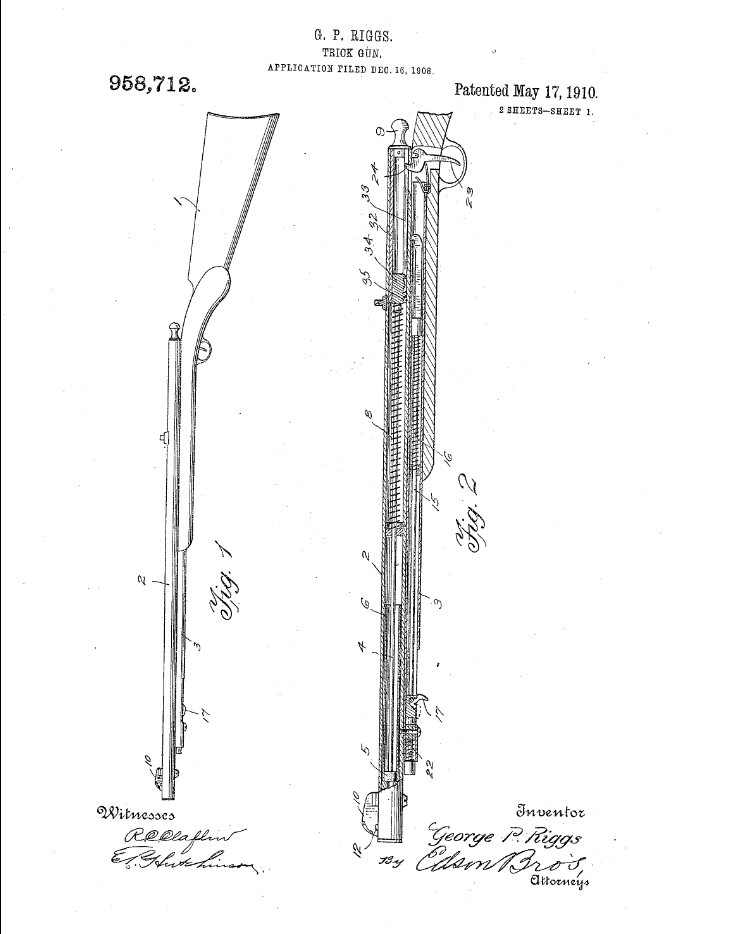
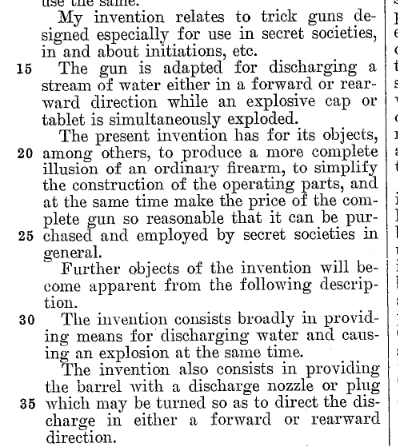
Posted By: Paul - Wed Apr 24, 2024 -
Comments (1)
Category: Clubs, Fraternities and Other Self-selecting Organizations, Guns, Patents, 1900s, Pranks
Trick Chair
Bang! And down goes the victim!Full patent here.
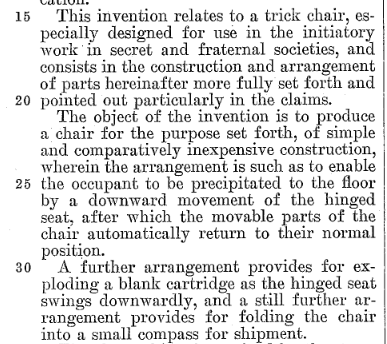
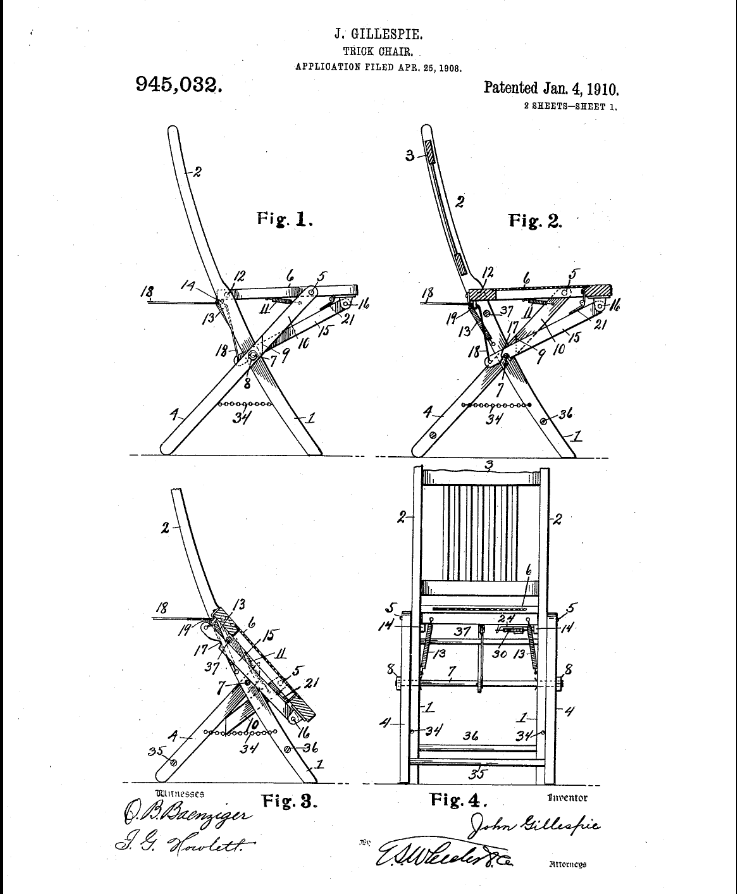
Posted By: Paul - Tue Apr 09, 2024 -
Comments (2)
Category: Clubs, Fraternities and Other Self-selecting Organizations, Patents, 1900s, Pranks
When Dogs Fly

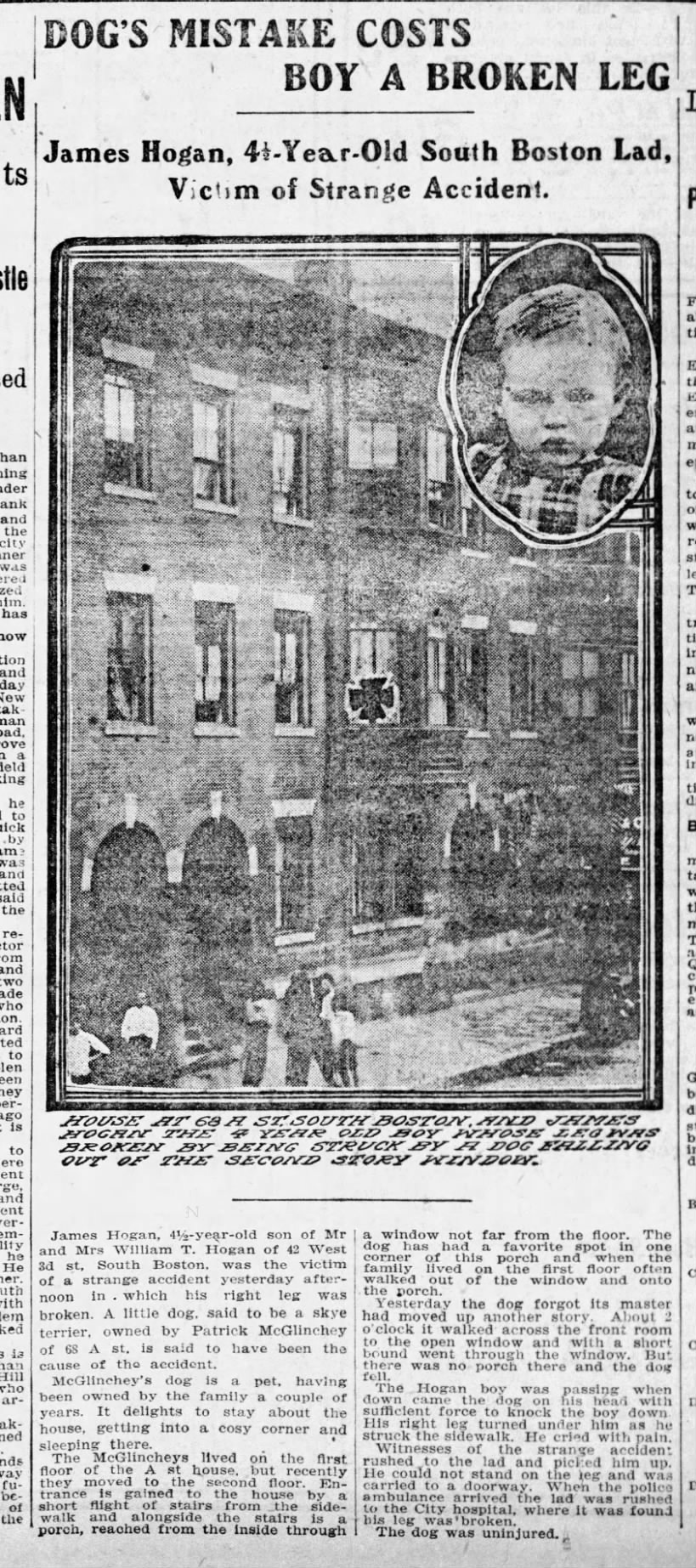
Posted By: Paul - Sun Apr 07, 2024 -
Comments (1)
Category: Innocent Bystanders, Passersby, Witnesses and Accidental Victims, Children, Dogs, 1900s
Electricura Shoes
John Wilson Gibbs claimed that his patented "electric shoe" would cure rheumatism.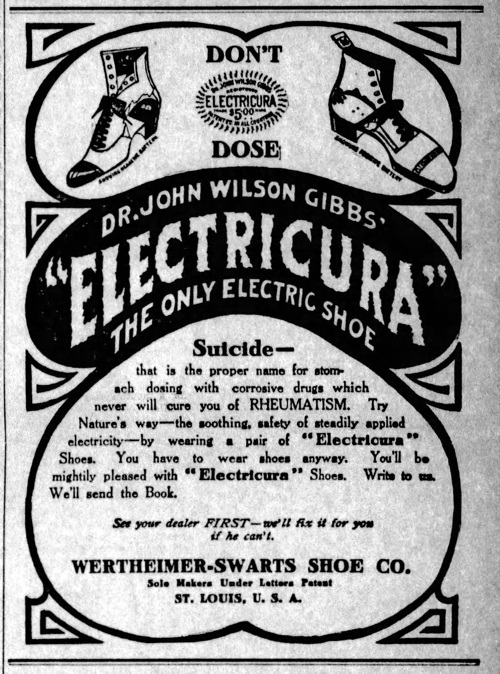
Kansas City Star - July 23, 1907
How the shoes generated electricity is explained in his 1903 patent (No. 740,548). They contained zinc and copper nails. The two metals, when combined with sweaty feet, would form a galvanic cell, producing a mild electric current.
The sole of the shoe is shown at A, and in the upper surface thereof there are driven or otherwise inset a series of nails or studs B, with each of which there is associated a similar nail or stud C. The studs of the series B are preferably of zinc and those of the series C preferably of copper, thereby providing pairs of elements of dissimilar metals or opposite in sign such that when contacted with by the foot of the wearer from the influence of the warmth or moisture of the person or for other reasons an electric current will be generated, passing from one element to the other through the body of the wearer. The medical and therapeutic effects of such a current are well known, and I claim herein only the specific construction of the means for obtaining such a current.
What he doesn't mention is that the metals would quickly corrode, at which point the electricity would stop. Not that such a tiny amount of electricity would have had any therapeutic effect anyway.
Of course, this was back in the era when adding the word "electric" to any product was a sure way to give it more consumer appeal. A long time ago I had a brief article published in Smithsonian magazine in which I gave some examples of this phenomenon.
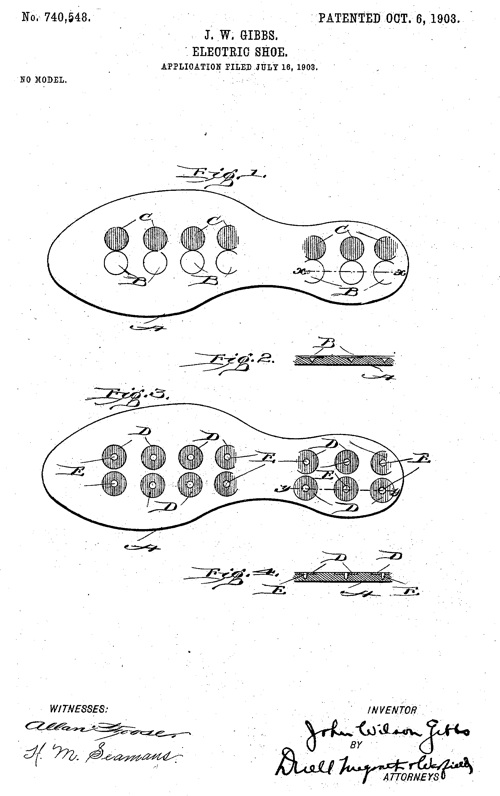
Posted By: Alex - Mon Mar 11, 2024 -
Comments (3)
Category: Patents, Shoes, 1900s
Thomas Snell’s Millions
Rich people are weird.Before dipping into this story, some perspective on the value of the estate.


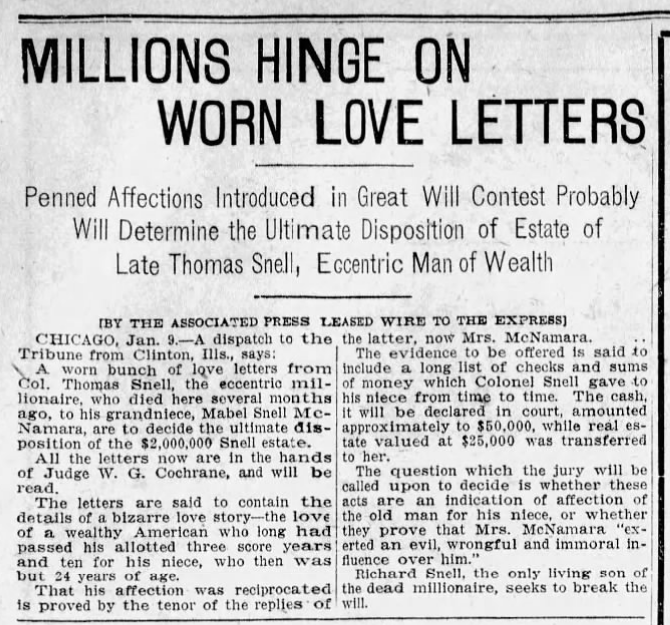



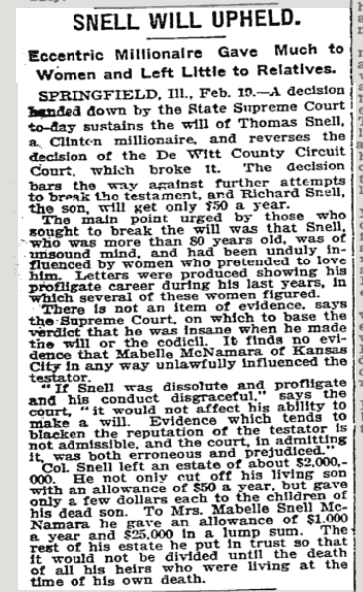
And as final icing on the cake.


Posted By: Paul - Sun Mar 10, 2024 -
Comments (0)
Category: Death, Money, Lawsuits, 1900s, Women
The Roller Skate Craze
Posted By: Paul - Sat Oct 21, 2023 -
Comments (0)
Category: Bicycles and Other Human-powered Vehicles, Fads, Humor, 1900s
“Fighting the Flames” at Dreamland
The Dreamland amusement park had a spectacle that consisted of a street scene of building facades which would erupt in flames, allowing a mock rescue by fireman-actors. Ironically, the whole park died in a giant inferno.
Posted By: Paul - Mon Sep 25, 2023 -
Comments (0)
Category: Fairs, Amusement Parks, and Resorts, Firefighting, Arson, Wildfires, Infernos and Other Conflagrations, Simulations, Make-Believe, Cosplay and other Pretend Situations, 1900s, 1910s
From India to the Planet Mars
A good article here.
Read the book at the Internet Archive.

Posted By: Paul - Tue Sep 19, 2023 -
Comments (0)
Category: Supernatural, Occult, Paranormal, Space Travel, 1900s

| Who We Are |
|---|
| Alex Boese Alex is the creator and curator of the Museum of Hoaxes. He's also the author of various weird, non-fiction, science-themed books such as Elephants on Acid and Psychedelic Apes. Paul Di Filippo Paul has been paid to put weird ideas into fictional form for over thirty years, in his career as a noted science fiction writer. He has recently begun blogging on many curious topics with three fellow writers at The Inferior 4+1. Contact Us |




